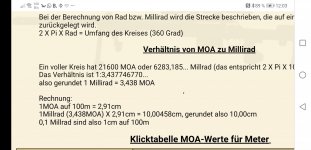You just answered your own question. Lol.
What if one click wasn’t equivalent to .1 Mil at 100 meters. What if one click equated to .1 Mil (one cm) at 50 meters (but that distance figure wasn’t stated on the turrets).
Don’t you think that your rifle’s dope for a 1000m shot would be different from the same elevation you verified based on a scope indexed for 1 click=.1mil at 100m?
do you think you’d still be on target with the first round fired dialing up the same number of clicks using this new scope with a different index (unbeknownst to you because no distance figure is on the turrets)
Or better yet. What if .1mil = .1mil regardless of the distance from your target? Suddenly it wouldn’t matter how far you were away, it would always be .1mil.
Man - something like that would make the whole thing way more simple!



